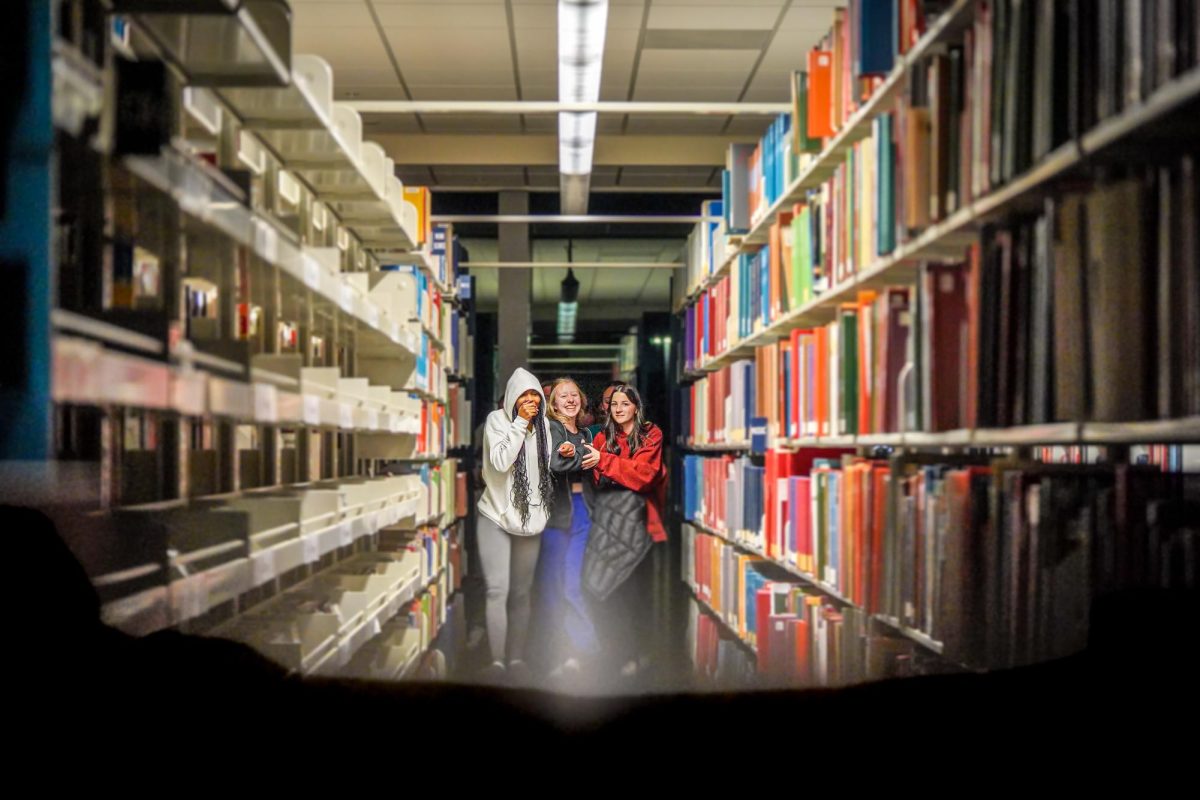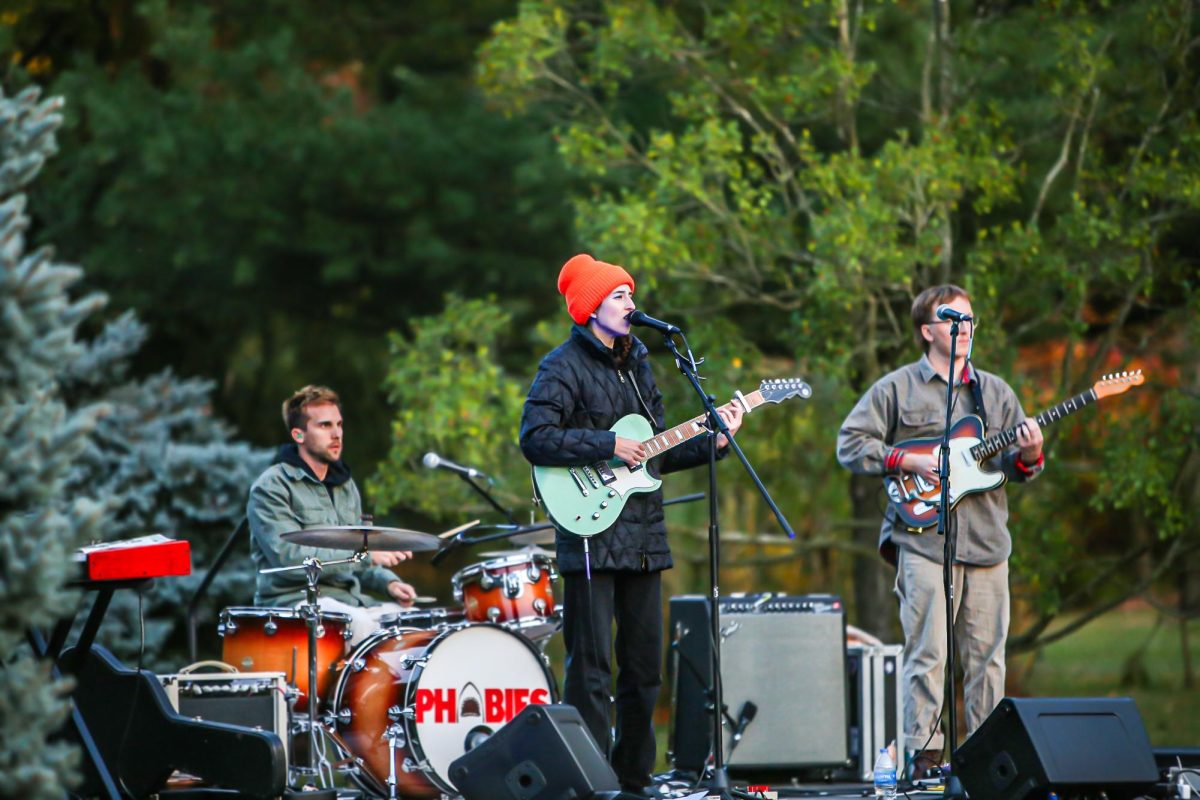‘This is what a democracy looks like’
Apr 21, 2017
Headline:’This is what a democracy looks like’
Subhead: Millions gather worldwide to promote equal rights
By: Hannah Lentz
[email protected]
It’s estimated that one in every 100 Americans marched Saturday, Jan. 21, to protest the inauguration of President Donald Trump and promote the need for equal rights as part of the “Women’s March on Washington.” With marches on every continent, the march may go down in history as one of the largest forms of assemblies worldwide.
Though the march was met with criticisms from several other social justice advocate groups who had concerns that minorities and other underrepresented communities were not the focus of the rally, it is estimated by the Women’s March on Washington movement that more than 5 million people participated worldwide.
In an effort to be part of the change, several students from Grand Valley State University also made the trip to make their voices heard.
Senior Leah McCombs traveled to Washington, D.C. with friends from GVSU and her hometown. Since all the buses in Michigan were already sold out, they decided to drive. Along the way, they saw acts of kindness and hope that were also reflected in the march’s efforts McCombs said.
“Every place we stopped along the way there were cars and buses of women, men and kids just like us driving to D.C.,” McCombs said. “Everyone was high-fiving and cheering at each stop.”
Though McCombs said that the whole experience of participating in the march was hard to put into words, the movement was full of love, energy, affirmation and encouragement.
At the march, social justice advocates such as Angela Davis spoke to the crowd about women’s rights, racial equality and the idea of a nation of understanding and political change. The speaker list also included celebrities such as America Ferrera and Scarlett Johansson.
“It’s not just action for women’s rights, but the rights for all,” McCombs said. “Rights for the LGBTQ community, the right to clean air, education. In a society where social media rules, real action requires participation, not just sharing a picture or an opinion online.”
The march also promoted the “10 Actions for the first 100 Days” campaign that focuses on a different form of protest and change that people can participate in for President Trump’s first 100 days in office. This is a way to keep the movement going past the end of the marches McCombs said.
“It shows how much and how willing we are to fight for what we believe we deserve,” McCombs. “Saying ‘thank you’ to the women before me who did the same, who gave me the rights and privileges that were not once available.”
The march was not ignored by Trump either. Following the march, Trump tweeted, “Watched protests yesterday but was under the impression that we just had an election! Why didn’t these people vote? Celebs hurt cause badly.” Though Trump’s tweet came with backlash from a large portion of female protestors and activists, it was rooted in the fact that Trump won the vote of 53 percent of white women, compared to Clinton’s 43 percent.
“Seeing the backlash against the march was kind of upsetting and a little discouraging at first,” McCombs said. “The same feeling came when I found out about Trump’s first executive orders on anti-abortion and the Keystone XL and Dakota Access pipelines. I hope that people from both sides of these discussions are able to work together to find solutions.”
However, Trump’s tweet and the election results are not taking into consideration the results of the popular vote and what that means compared to the final election results said GVSU senior and Women’s March on Washington participant Chelsea Michalec.
“We were the popular vote,” Michalec said. “I think people tend to ignore that but that was a chant throughout the day, ‘We. Are. The. Popular. Vote’ and I think that that means something, something memorable.”
Michalec was in D.C. not only for the Women’s March on Washington but also for the smaller protests surrounding the Presidential Inauguration. During these protests, the tone was a little different.
During these protests, there were instances of violence, destruction and panic. However, Michalec said that there was something unique about the assembly.
“Even though it was destructive, it was amazing that so many people came together for something,” Michalec said. “There was a medical team there to help people and everyone was looking out for each other.”
Overall, six police officers were injured and 217 protestor arrests were made Friday, Jan. 20. Alternatively, there were no recorded arrests at the Women’s March on Washington making it one of the most peaceful and largest protests throughout history.
One of the biggest forms of advocacy during the Women’s March on Washington was the variety of signs that marchers created and displayed during the march.
“It was crazy and life changing to hear a crowd of hundreds, of thousands answer a call from some saying ‘show me what democracy looks like’ and ‘this is what democracy looks like,'” McCombs said.
The march on Washington also inspired protestors across the nation including a march of over 8,000 people outside of the Lansing state capital.
Though it was a “women’s march,” there was representation from all genders as well as ages in attendance which was one of the coolest elements of the march said GVSU senior and Lansing march participant Kelsey Corr.
“The diversity of genders, cultures, religions and age ranges was amazing,” Corr said. “I loved the parents who brought their children of all ages. What an important decision to bring your child, get them involved at an early age and to introduce them to a true democracy.”
Corr said this kind of clear, pictured expression is important due to the discontent between generations and backgrounds. It is imperative that everyone has a voice and something they can bond over she said.
“This election turned friends against friends because of his or her vote. Families have turned upside down if they have opposing views,” Corr said. “However, this movement has created a sisterhood, a kinship, a fellowship of solidarity. We are meeting and connecting with a diverse group of activists, forming bonds for a cause that is as important now as it was over a hundred years ago.”
Since the protests have stemmed from campaign promises and early actions of Trump’s presidency regarding limitations on women’s health options and press transparency, it is unclear what effect the marches will have on the population but it is hoped by followers of the movement that a conversation is started that continues into the next four years of Trump’s presidency.
“We are living in uncertain times and if someone has the power to make the ultimate decision on something that will affect my life, my friend’s lives, families’, neighbors, then I want to help be their voice,” Corr said.
The takeaway from these marches is that everyone matters and that fundamental rights are a necessity for all, no matter their backgrounds or beliefs, McCombs said.
“To those who don’t understand why we marched, I will say that I marched for them as well. There are many who don’t get why something matters until it happens to them. I ask them to open their minds, to see the reasons behind this march and that I, and millions of others here and across the world will continue acting.”






















